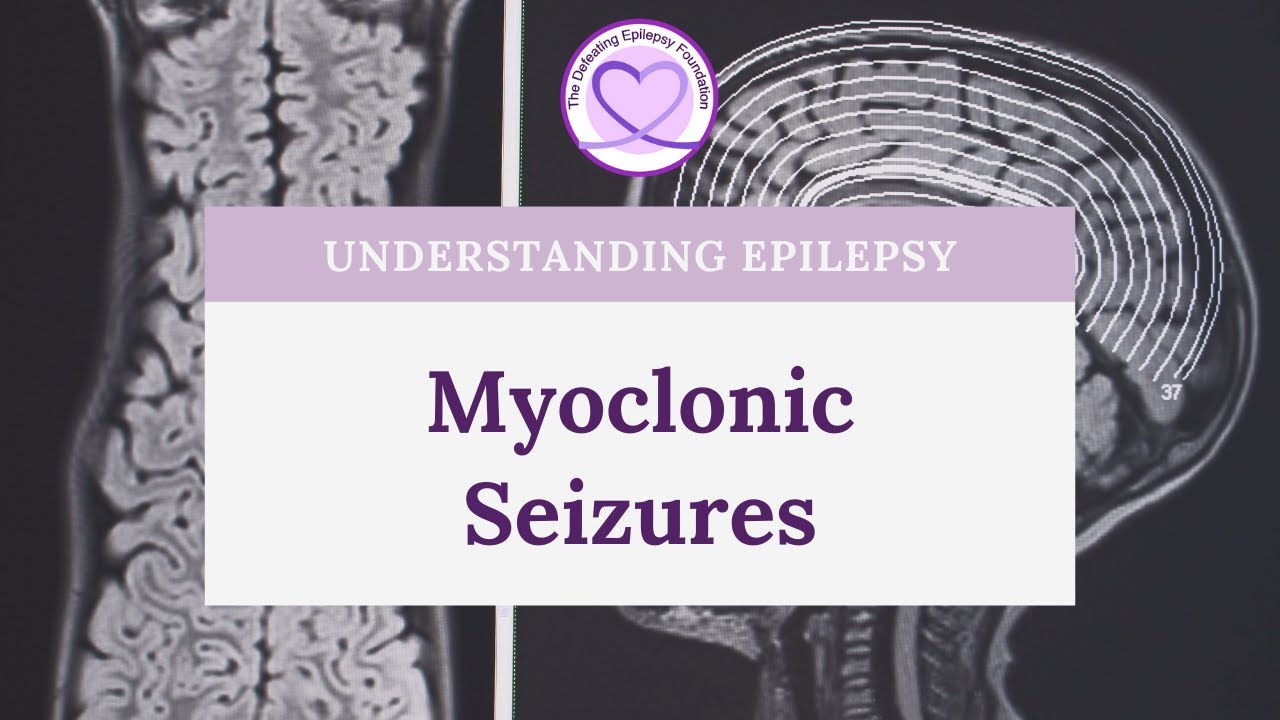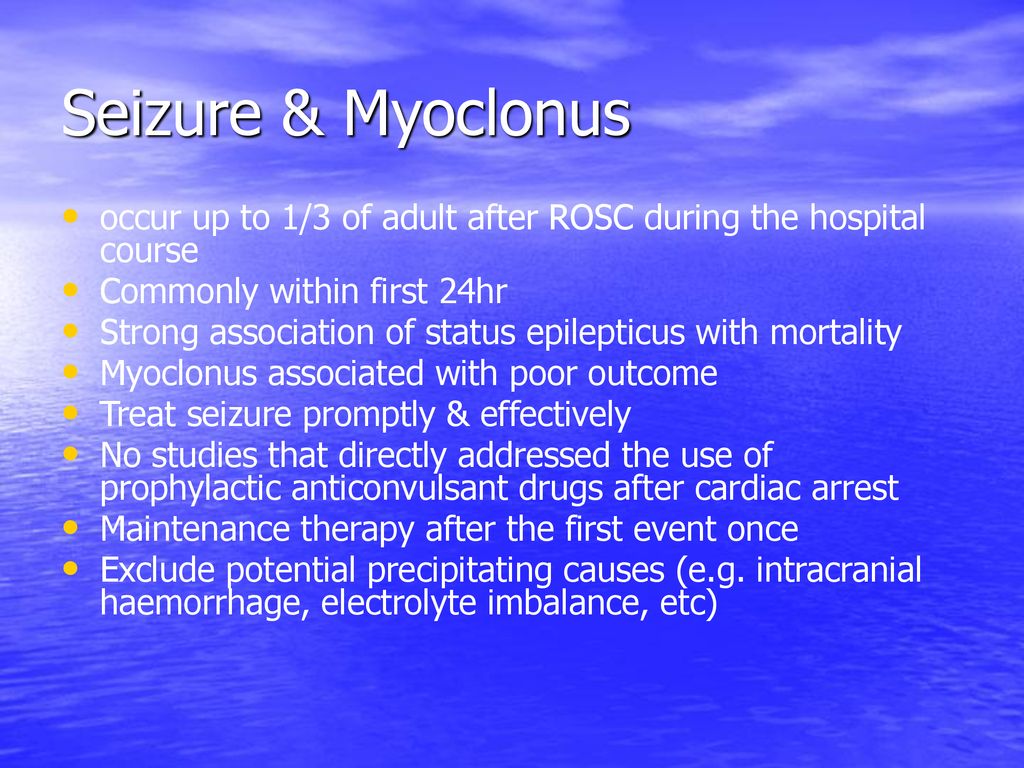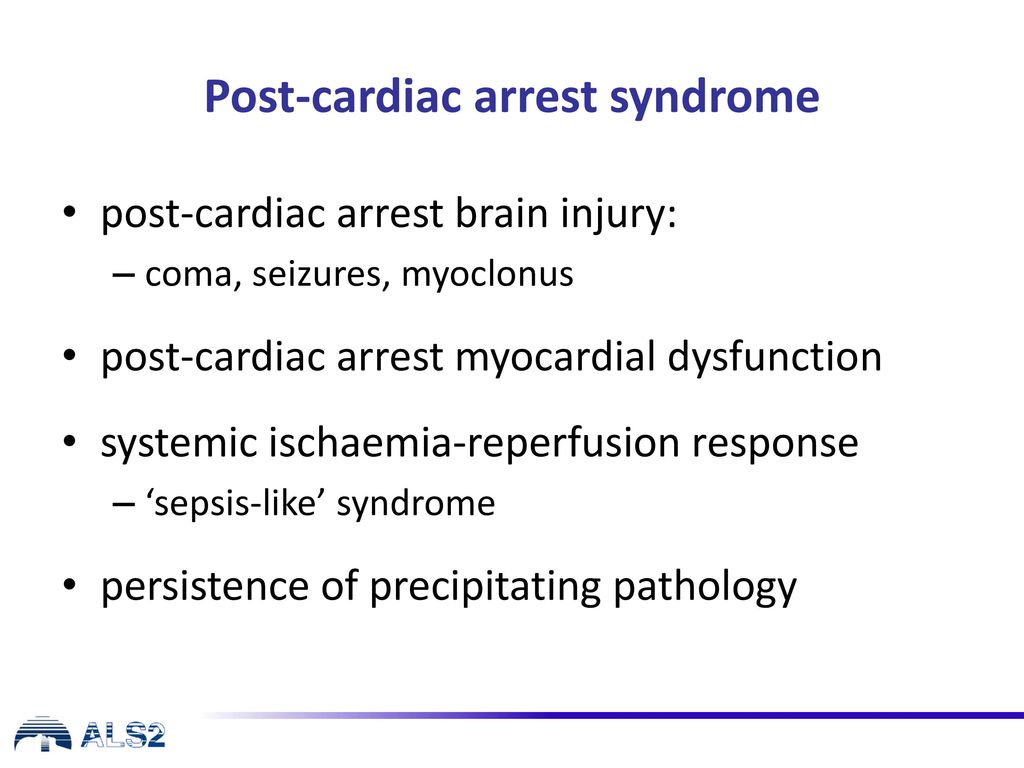Myoclonic Jerks After Cardiac Arrest - Myoclonus, the brief involuntary twitching of a muscle or group of muscles, occurs in about 20% of patients resuscitated from. If an sca survivor is experiening involuntary movement (jump, jerk or twitch) of a muscle or muscle group they could be experiencing. Although myoclonus less than or equal to 72 hours after cardiac arrest (ca) is often viewed as a single entity, there is. Accurate prediction of neurological outcome in survivors of cardiac arrest may be difficult. Myoclonus, status myoclonus, and (electrographic) status epilepticus are signs of severe brain injury in comatose patients after.
Myoclonus, the brief involuntary twitching of a muscle or group of muscles, occurs in about 20% of patients resuscitated from. Myoclonus, status myoclonus, and (electrographic) status epilepticus are signs of severe brain injury in comatose patients after. If an sca survivor is experiening involuntary movement (jump, jerk or twitch) of a muscle or muscle group they could be experiencing. Although myoclonus less than or equal to 72 hours after cardiac arrest (ca) is often viewed as a single entity, there is. Accurate prediction of neurological outcome in survivors of cardiac arrest may be difficult.
Although myoclonus less than or equal to 72 hours after cardiac arrest (ca) is often viewed as a single entity, there is. Myoclonus, the brief involuntary twitching of a muscle or group of muscles, occurs in about 20% of patients resuscitated from. Myoclonus, status myoclonus, and (electrographic) status epilepticus are signs of severe brain injury in comatose patients after. Accurate prediction of neurological outcome in survivors of cardiac arrest may be difficult. If an sca survivor is experiening involuntary movement (jump, jerk or twitch) of a muscle or muscle group they could be experiencing.
MYOCLONIC JERKS YouTube
Myoclonus, status myoclonus, and (electrographic) status epilepticus are signs of severe brain injury in comatose patients after. Accurate prediction of neurological outcome in survivors of cardiac arrest may be difficult. If an sca survivor is experiening involuntary movement (jump, jerk or twitch) of a muscle or muscle group they could be experiencing. Myoclonus, the brief involuntary twitching of a muscle.
Myoclonic Seizures Symptoms, Causes, Diagnosis, Treatment
Although myoclonus less than or equal to 72 hours after cardiac arrest (ca) is often viewed as a single entity, there is. Accurate prediction of neurological outcome in survivors of cardiac arrest may be difficult. Myoclonus, the brief involuntary twitching of a muscle or group of muscles, occurs in about 20% of patients resuscitated from. If an sca survivor is.
MYOCLONIC JERKS secondary to HYPOXIC BRAIN INJURY YouTube
If an sca survivor is experiening involuntary movement (jump, jerk or twitch) of a muscle or muscle group they could be experiencing. Myoclonus, status myoclonus, and (electrographic) status epilepticus are signs of severe brain injury in comatose patients after. Although myoclonus less than or equal to 72 hours after cardiac arrest (ca) is often viewed as a single entity, there.
Myoclonic Seizures Insights, Triggers, and Coping Strategies
Myoclonus, the brief involuntary twitching of a muscle or group of muscles, occurs in about 20% of patients resuscitated from. Myoclonus, status myoclonus, and (electrographic) status epilepticus are signs of severe brain injury in comatose patients after. Accurate prediction of neurological outcome in survivors of cardiac arrest may be difficult. Although myoclonus less than or equal to 72 hours after.
Diagnosis and management of seizures and myoclonus after cardiac arrest
If an sca survivor is experiening involuntary movement (jump, jerk or twitch) of a muscle or muscle group they could be experiencing. Although myoclonus less than or equal to 72 hours after cardiac arrest (ca) is often viewed as a single entity, there is. Myoclonus, status myoclonus, and (electrographic) status epilepticus are signs of severe brain injury in comatose patients.
The Key to Survival Dr Tong WL Associate Consultant ppt download
Myoclonus, status myoclonus, and (electrographic) status epilepticus are signs of severe brain injury in comatose patients after. If an sca survivor is experiening involuntary movement (jump, jerk or twitch) of a muscle or muscle group they could be experiencing. Accurate prediction of neurological outcome in survivors of cardiac arrest may be difficult. Myoclonus, the brief involuntary twitching of a muscle.
Powerpoint
If an sca survivor is experiening involuntary movement (jump, jerk or twitch) of a muscle or muscle group they could be experiencing. Myoclonus, status myoclonus, and (electrographic) status epilepticus are signs of severe brain injury in comatose patients after. Although myoclonus less than or equal to 72 hours after cardiac arrest (ca) is often viewed as a single entity, there.
What Is Sleep Myoclonus, Twitching Jerks, or Movements?
Accurate prediction of neurological outcome in survivors of cardiac arrest may be difficult. Although myoclonus less than or equal to 72 hours after cardiac arrest (ca) is often viewed as a single entity, there is. If an sca survivor is experiening involuntary movement (jump, jerk or twitch) of a muscle or muscle group they could be experiencing. Myoclonus, status myoclonus,.
Postresuscitation care ppt download
Myoclonus, status myoclonus, and (electrographic) status epilepticus are signs of severe brain injury in comatose patients after. Accurate prediction of neurological outcome in survivors of cardiac arrest may be difficult. Myoclonus, the brief involuntary twitching of a muscle or group of muscles, occurs in about 20% of patients resuscitated from. If an sca survivor is experiening involuntary movement (jump, jerk.
What is Myoclonus?, Symptoms, Causes, Treatment & More
Myoclonus, status myoclonus, and (electrographic) status epilepticus are signs of severe brain injury in comatose patients after. Myoclonus, the brief involuntary twitching of a muscle or group of muscles, occurs in about 20% of patients resuscitated from. Although myoclonus less than or equal to 72 hours after cardiac arrest (ca) is often viewed as a single entity, there is. Accurate.
Accurate Prediction Of Neurological Outcome In Survivors Of Cardiac Arrest May Be Difficult.
Myoclonus, status myoclonus, and (electrographic) status epilepticus are signs of severe brain injury in comatose patients after. Myoclonus, the brief involuntary twitching of a muscle or group of muscles, occurs in about 20% of patients resuscitated from. If an sca survivor is experiening involuntary movement (jump, jerk or twitch) of a muscle or muscle group they could be experiencing. Although myoclonus less than or equal to 72 hours after cardiac arrest (ca) is often viewed as a single entity, there is.

:max_bytes(150000):strip_icc()/overview-of-myoclonic-epilepsy-4175105_final-294e31312f174513a65079058ebb40fb.png)





:max_bytes(150000):strip_icc()/what-is-sleep-myoclonus-3014807_final-7ed9480f6cd84571bd9019a52c2b0951.png)

